Just Some Carter Capps Stuff, Whatever, Forget About It
WHAT
Courtesy of Brooks Baseball, here’s a graph of Carter Capps’ horizontal release points over time. Negative numbers on the y axis refer to distance from the middle of the rubber toward third base, in feet. The graph is complicated, but it’s not, really.
MORE
Here’s Capps from his second-to-last appearance:
And his last appearance:
Look at his feet, and the rubber. Here’s Capps from his second-to-last appearance:
And his last appearance:
SO
Capps was demoted to Triple-A Tacoma in large part to work on his delivery and straighten it out. There was a lot of talk about angles and efficiency, and it used to be that Capps threw from one of the most extreme horizontal release points in baseball. In Capps’ first appearance back, he shifted about a foot or so to the left. This, presumably, is part of what he was working on, and while this release point is still extreme, it’s less extreme, by about a foot or so. There was no visible, marked difference in vertical release point, so this pretty much all came from moving on the mound.
SO WHAT
This is evidence of a clear, intentional change. Pitchers are conscious of where they’re standing, so it’s not like you need a big sample of data to observe a new starting position. Capps, before being demoted, was struggling, then he made some changes, and now here’s one of those changes, intended to help him not be struggling anymore.
SO
Carter Capps might pitch better.
HOW
There’s probably value in reducing the extremity of a release angle, when facing both righties and lefties alike. Lefties shouldn’t get as good a look as they used to, and Capps should be better able to channel his momentum toward home plate how he wants if he’s a little more centered. The movement on pitches will look different, now that Capps is shifted over. Lots of other pitchers have tried moving on the rubber to improve their results, and there have been success stories.
BUT
I guess we can’t say for sure. All we can say for sure is that Capps has shifted some. Who knows if it’ll work? You never know which little adjustment will help a reliever vault into the upper tier. You also never know which little adjustment will accomplish nothing. People get excited by observed change in players, because they think that improved play will follow, as a result. As if success coming after changes is automatic. That’s not true, and the worst players in baseball are constantly tweaking. Some changes don’t take. Some changes do take and don’t work. It’s not as if now we can think of Carter Capps as the strikeout machine he’s supposed to be. He’s a troubled reliever until he proves otherwise over a satisfactory period of time.
SO
Whatever, there’s a thing.
==========
WHAT
Also courtesy of Brooks Baseball, Capps threw 11 changeups the other day, out of 38 pitches. Out of his other 629 pitches, this year, before the other day, he threw ten changeups.
SO
That is many changeups.
SO
For a guy who didn’t throw many changeups.
SO WHAT
Capps was also demoted because he couldn’t retire lefties with any kind of consistency. Of course, all his problems have probably been related to one another, but Capps is a righty side-armer with a fastball and a breaking ball that isn’t a curve or a split, which means Capps didn’t exactly have a weapon to throw to left-handed hitters. He’d thrown a change on occasion, but not with trust or confidence. A good changeup is a powerful weapon against opposites, for some reason.
SO
11 changeups is more changeups than ten changeups. This is probably evidence of a clear, intentional change. Pitchers are conscious of what they’re throwing — they have to agree to every single pitch — and all 11 changeups were thrown to lefties. Seems like Capps was told to work on his change, and either he wanted to throw it a lot the other day, or the team wanted him to throw it a lot the other day. Whichever the case, the other day, he threw it a lot.
SO
Carter Capps might pitch better.
HOW
As noted, a quality changeup is invaluable when lefties face righties or when righties face lefties. It’s not the only potential weapon, as curves and splitters and cutters also work, but Capps is trying a change and a change could go a long way toward solving his problems with lefties. Capps is built like a guy who’d have a big platoon split. He has that low arm angle, that running fastball, and that mostly-sharp breaking ball. He profiles like a guy you wouldn’t want to face many lefties, but with a good change, he could make himself reliable across the board.
BUT
Throwing a changeup isn’t the same as throwing a good changeup, and throwing a good changeup isn’t the same as consistently throwing a good changeup. I’ve seen Tom Wilhelmsen throw good changeups before, but he’s in Tacoma, just like Capps was. It’s not very difficult to grip a ball and make it move. It’s very difficult to make it move consistently and end up where you’d like, and it’s also worth noting that Capps could have particular trouble releasing a good change from his arm slot. If it were easy to master a changeup, everybody would have a good changeup. Capps’ change is a work in progress, and sometimes it’ll look great, but it might not ever become great. It might just be a pitch he never trusts. Remember: attempting a tweak isn’t the same thing as successfully integrating a tweak. It’s just the first or second step. Baseball is hard.
SO
Whatever. Carter Capps might pitch better and he might not.
Comments
7 Responses to “Just Some Carter Capps Stuff, Whatever, Forget About It”
Leave a Reply
You must be logged in to post a comment.

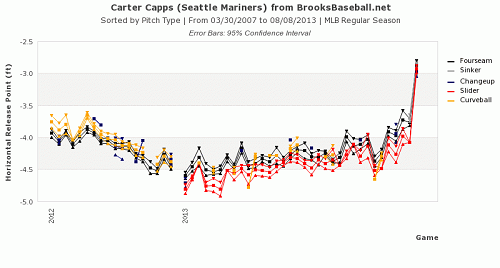
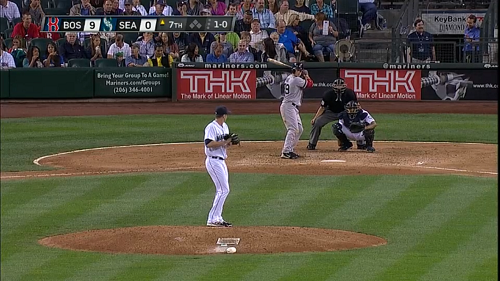
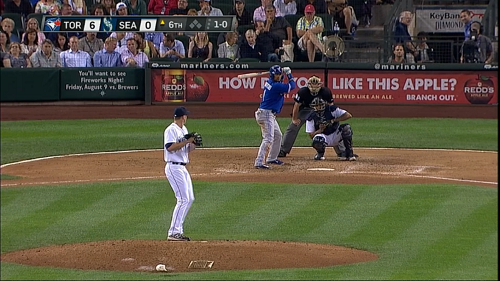
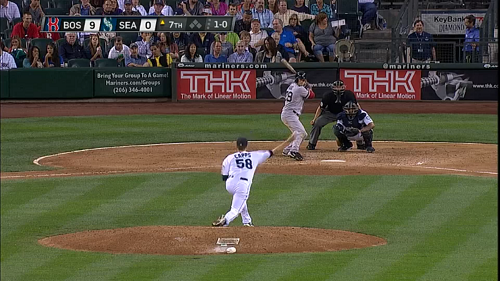
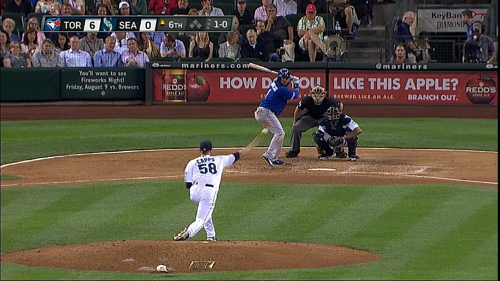
Glad that’s settled then!
In the LL post “Figuring out Carter Capps” there is an interesting side-by-side GIF of Capps in the comments section that highlights his mechanical differences between 2012 and 2013. Not sure how much these differences played into his effectiveness, and maybe they were changes purposely implemented for specific reasons (health, pitch movement, etc). Regardless, mechanically he was doing things a bit differently and it was pretty obvious.
Excited to see if he tightened his delivery back up, pre-2013 style.
Some good points. One quibble: on Capps’ arm slot, it should actually make it easier to throw a good change up with movement. His fastball has more arm side run because of the arm slot. If his starting point is to throw a “straight” change, it should run like his fastball (a change up is thrown like a fastball). It should actually be less difficult for him to throw a moving change up, rather than a straight one.
This is reminiscent of Jeff Nelson who struggled against lefties until he developed a circle change.
I think many of know that sliders and curves that break in on a hitter are usually easier to hit than sliders and curves that break away for the hitter. Thus the platoon advantage, This is overcome by change-ups and split fingers and 12-6 curves that break mostly straight down. Does anyone throw a screwball anymore? It was a breaking ball that broke to a right-handed pitcher’s right, like a lefty’s curve. Luis Tiant and Pedro Ramos were reknown for throwing them. (Guess how old I am).
I believe Hector Santiago (CWS) still throws a screwgie. Danny Herrera had a good one, but I’m not sure where he is these days.
I was wondering the same thing: what ever happened to the screwball? Do pitchers not throw it anymore because … it’s too taxing and injurious (Carl Hubbell’s arm was permanently rotated due to his throwing screwballs)? Because the rising popularity of the split-finger means it’s more effective or easier to learn? Or?
One rarely hears of pitchers throwing palmballs or forkballs anymore either. However here it’s more clear that change-ups and split-fingers could be reasonable substitutes or variations.
Injurious is an accurate term. Pitchers simply aren’t taught forkballs nowadays – it’s a pitch they have to create to on their own. For example, Danny Herrera’s forkball evolved from his experiments with a changeup. I’m guessing Hector Santiago is the same.
A true forkball is tough to throw. Alien-like fingers are required and the steep learning curve prevents mastery. Similar results can be achieved with a wide split grip and the pitch is much easier to control.
A palmball can be easy to read out of a pitcher’s hand without some real Brain Fuentes-like funk to his delivery. A changeup is more disguised.